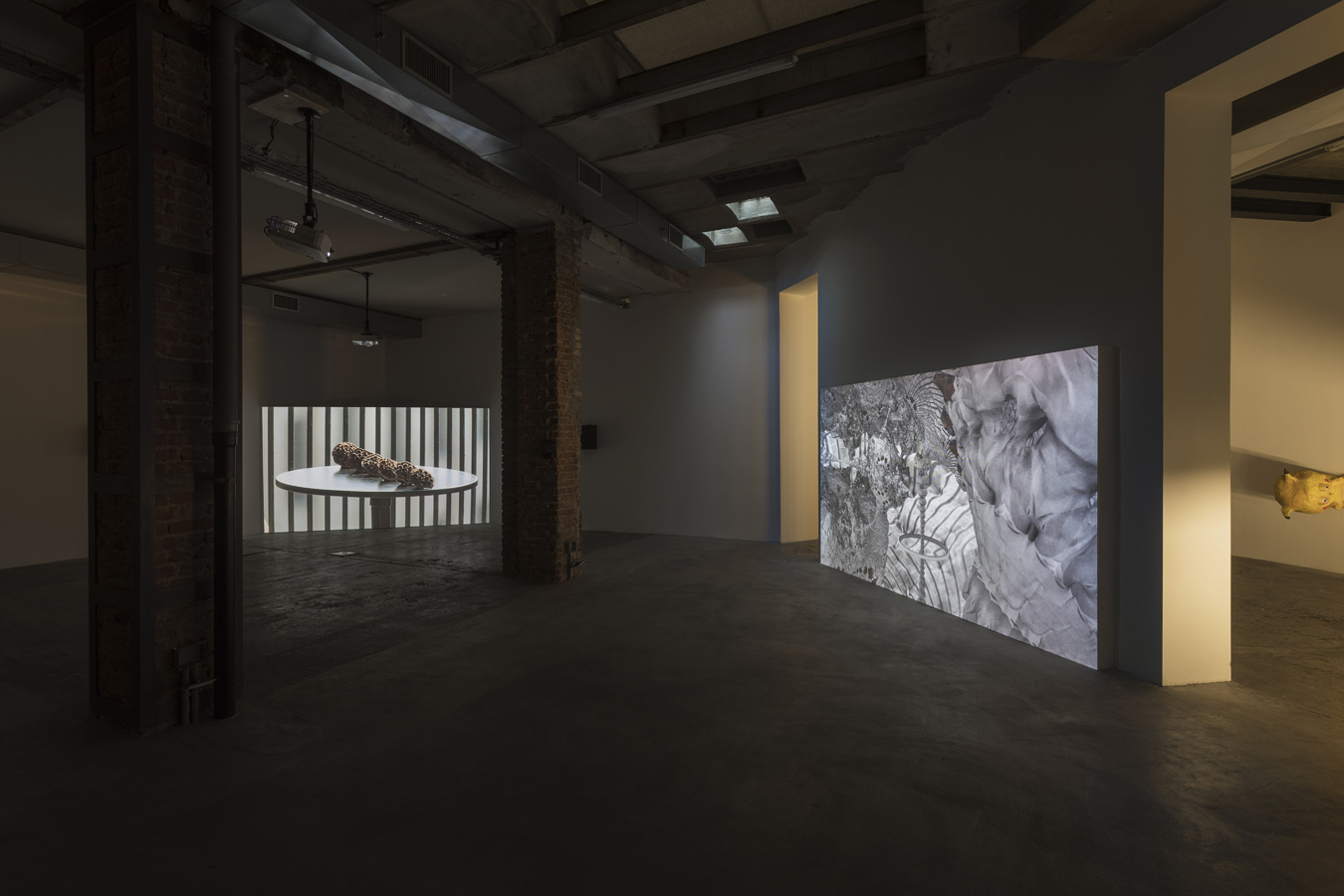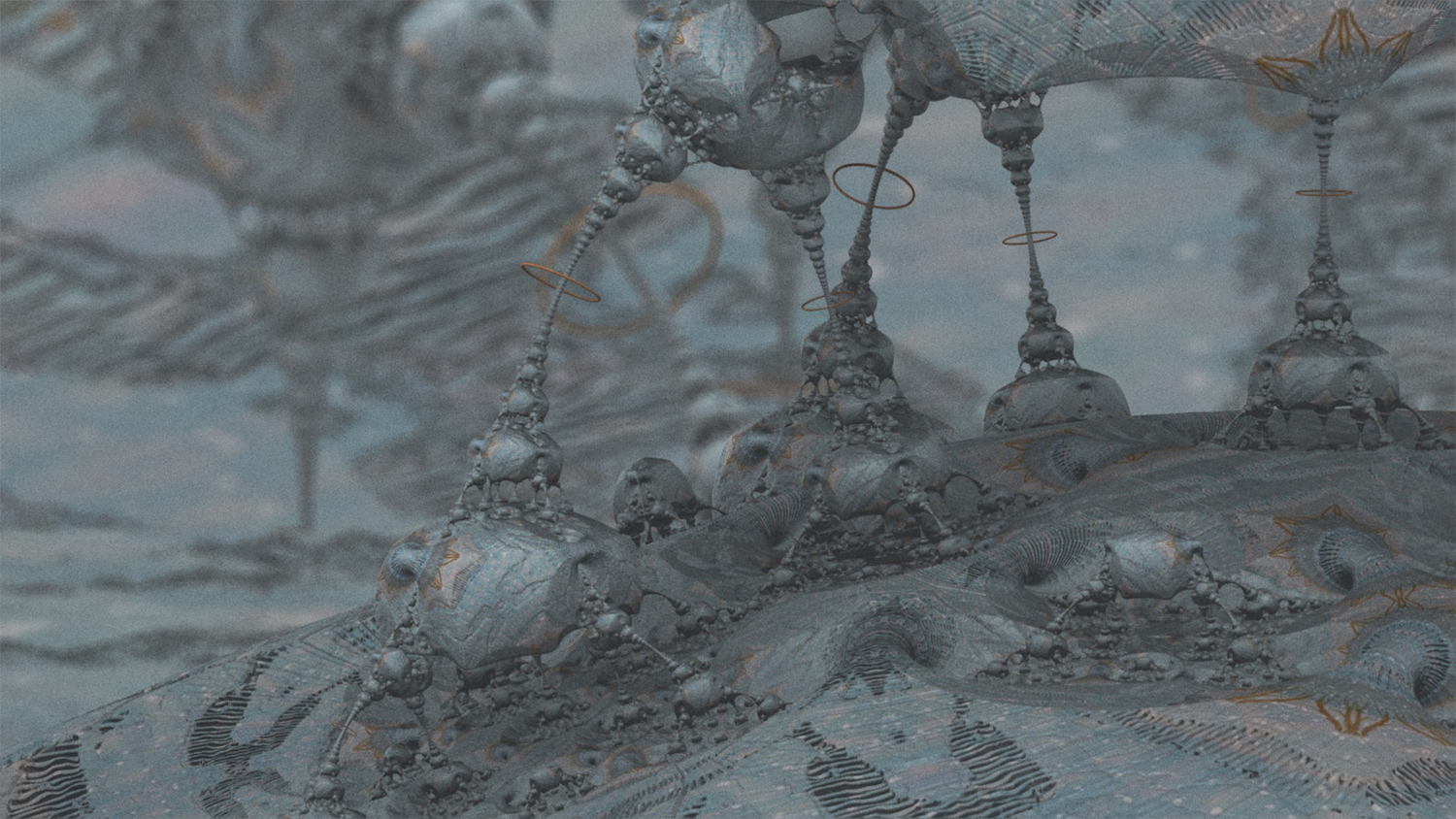
Lavender Town Syndrome at Ordet in Milan, Italy
2019-2020
Press: Flash Art, Contemporary Art Daily, Artribune, ArtReview



Z = |Z/Z•Z-1 mod 2|-1: Lavender Town Syndrome
13m 43s ● HD video ● Colour ● Sound ● 2020

Z = |Z/Z•Z-1 mod 2|-1: Slideshow
13m 43s ● HD video ● Colour ● Sound ● 2020

Z = |Z/Z•Z-1 mod 2|-1: The Old Victrola
13m 43s ● HD video ● Colour ● Sound ● 2020


Pikachu
cardboard, paper, paint




I don’t feel the way I’m supposed to feel
Infinite Loop ● DVD on iMac G4 ● Colour ● Sound ● Undated






Ordet presents "Lavender Town Syndrome", a solo show by Andrew Norman Wilson. The exhibition is centered around Z = |Z/Z•Z-1 mod 2|-1, a multichannel video work commissioned by Ordet. In this new work Wilson uses three different imaging technologies—a photographic lens, photorealistic ray tracing animations, and fractal ray-marching animations—to zoom through three constructed environments.
The first section employs a 75mm to 1500mm Canon telephoto lens developed for wildlife cinematography. This uncannily prolonged zoom moves from a cityscape view to details on a single balcony of Bertrand Goldberg’s Marina City, a lotus-shaped oddity of “organic architecture” amidst Chicago's thoroughly rectangular built environment that has been featured in movies such as I, Robot, Source Code, The Dark Knight, and Transformers 3.
The second section employs 8K photorealistic computer generated materials commonly used in architectural renders, video games, and the motion picture industry. These “physically based rendering” (PBR) materials are sold through the online database Substance Source, in which the surfaces of metals, plastics, rocks, and more are previewed as spherical forms.
The third section was procedurally generated using fractal software developed by the computer engineer Code Parade. Fractal algorithms are also commonly used in the fields of architecture, video games, and motion pictures, from computer-generated fractal surfaces in architectural renders to visual effects in science fiction films such as Inception, Doctor Strange, and Annihilation. Wilson worked with Code Parade to customize his program towards heightened cinematic realism and render what look like infinite synthetic 3d landscapes constructed for something other than the human body.
Also included in the show is an exact replica of a papier-mâché Pikachu found in a photograph posted to Reddit in 2013 by a user who claimed it was made by their little sister. The image has since become a meme with captions like “Expectations/Reality” and “Kill me.” Another replica is also featured in the commissioned video, along with other translations of memes.
In the next room, a video loop based on the first eight seconds of the Charlie Brown Christmas Special from 1965 is installed on a 2002 iMac G4. In contrast to the repetitive zooming of the new commission, this video pans back and forth over a hand drawn animation sequence based on the narrative world of Charles M. Schulz’s newspaper comic strip Peanuts. The scene is accompanied by the original source sound of Vince Guaraldi’s jazz score—here reduced to the first two bars.
These works all form the backstory of an ongoing project: a metafictional documentary about a group of artists who eventually drop out of the contemporary art world to pursue more socially productive design projects. In making these works, Wilson is interested in the role that technology plays in amplifying the impact of “truthiness” over truth. As sound, images, objects, computation, and bodies interrelate, they offer possibilities for intermedial imprints that provoke surprising new effects and complicated meanings.
In titling the show "Lavender Town Syndrome," Wilson summons a conspiracy theory in which more than 200 Japanese children were driven to suicide by a particular board in the game Pokémon Red and Green for Game Boy. Many others suffered serious migraines or nosebleeds, or turned violent when their parents tried to take the game away. Some cried until they started vomiting. These incidents were later determined to have been caused by the unsettling background music in Lavender Town, which, aside from containing a high tone undetectable to adult ears, was also an early experiment in binaural beats which are said to affect human behavior by syncing with listeners’ brainwaves.
Z = |Z/Z•Z-1 mod 2|-1 was produced through the leading support of Seven Gravity Collection and with additional support from DOCUMENT Chicago and SculptureCenter, New York.
Thanks to Giò Marconi, Zero..., and Clima.
All images courtesy the artist and Ordet.
Photos: Nicola Gnesi